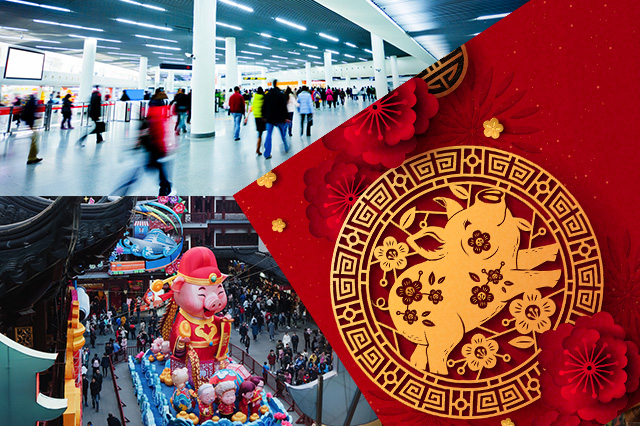
Nitheesh NH
Lunar New Year Sales Reach Over ¥1 Trillion
According to the Ministry of Commerce in China, the combined sales of retail and food-service enterprises in China during Lunar New Year from February 4-10 rose to a new high of ¥1.0 trillion (US$148.7 billion), growing 8.5% year over year.
New Year gifts, traditional foods, organic foods, smart home appliances, electronics and specialty products saw strong growth. Sales of home appliances of certain closely monitored enterprises in Anhui and Yunan grew nearly 15%, while sales of communication equipment in Ningxia grew 14.2%.
Lunar New Year's Eve dinners, family reunion feasts and dinners with relatives and friends dominated festival dining consumption. In Tianjin, 36 major restaurants received 12,000 bookings for Lunar New Year's Eve dinners, up 5.3% year over year. Some restaurants in Beijing saw revenue increase by more than 10% during the holiday compared with the same period last year, according to the Ministry of Commerce.
The number of orders for fully- or half-cooked dinners sold online rose noticeably as more Chinese consumers ordered ready-to-eat meals through e-commerce platforms or hired a chef to cook meals at home. On one online ordering platform, the number of orders for Lunar New Year's Eve dinners doubled as more people chose convenience over tradition, according to data from the Ministry of Commerce.
The Slowest Growth Since 2005
The 8.5% growth in retail and food-service sales was the slowest since 2005, and down from the 10.2% rate last year – and it was the first time in more than a decade that growth was in single digits. The slowdown shows Chinese consumers are becoming increasingly frugal amid uncertainty around the U.S.-China trade tensions and a slowing Chinese economy. The rapid buildup of household debt and cooling property prices are also damping consumers’ sentiment.
Chinese Consumers Are “Going Out”
New forms of entertainment have been gaining popularity in recent years, replacing many traditional activities. Chinese consumers are increasingly going out, visiting tourist spots, seeing movies or hitting museums.
- According to the Civil Aviation Administration of China, Chinese consumers took a total of 12.6 million air passenger trips in the period February 4-11, up 10.6% from last year.
- According to the Ministry of Commerce, museums across China hosted nearly half a million visitors during the holiday.
- Box office receipts exceeded ¥5billion during the Lunar New Year holiday, according to data from Ministry of Commerce.